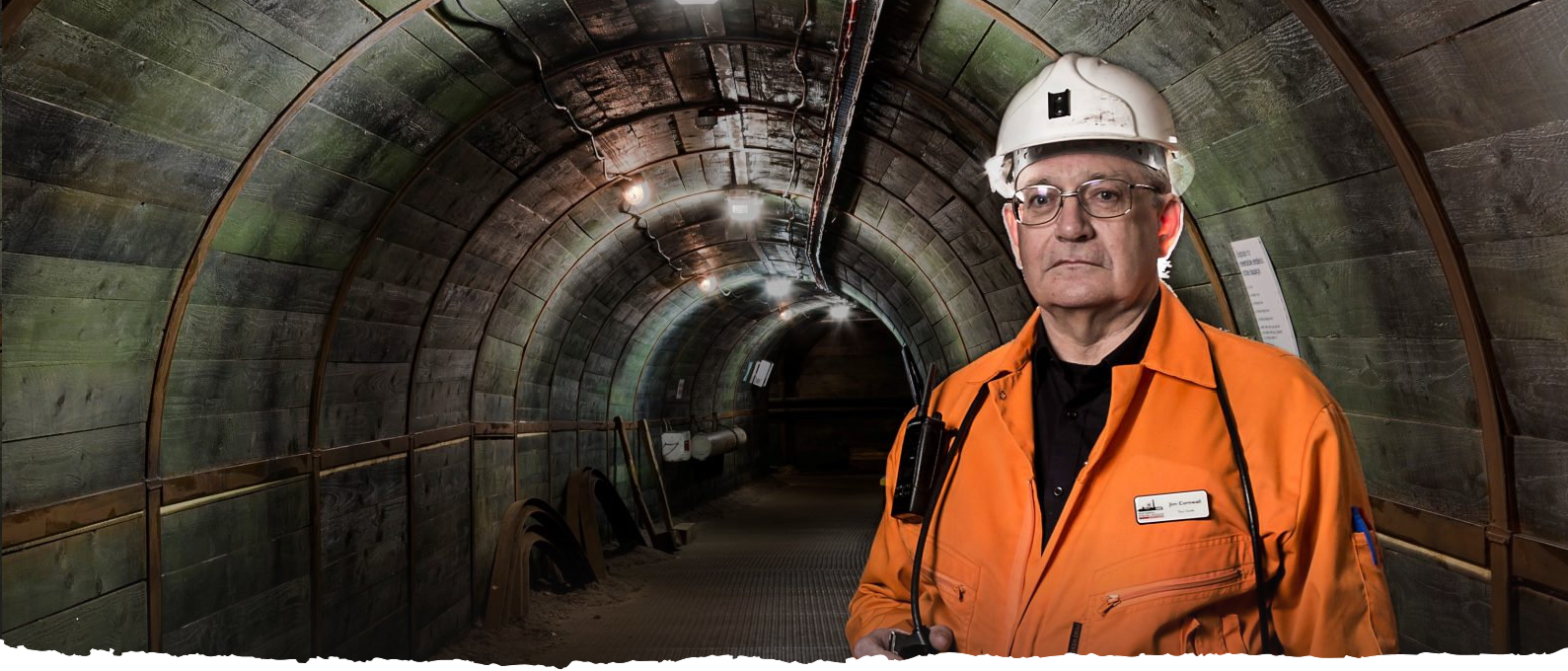Reviving King Coal in Frostpunk
By Joseph Brett-Demetre

“Old King Coal” courtesy of University of Florida library
A large, sinister figure sits atop sacks of coal. His face is concealed by shadow, but large empty eyes and the faint outline of a smile are just visible. The darkness of his face contrasts with the shining crown that rests atop his head. Below this king are his submissive subjects. There’s no trace of a smile on their faces. They consist of men, women and dying children, huddled together beneath the sacks of coal that form the throne of their sovereign. This image is from a cartoon published in Fun magazine in 1873. The King, of course, is coal itself.
In the early 1870s Britain was crippled by a ‘coal famine’, caused by a dramatic increase in industrial demand for coal. Prices roughly doubled between 1870 and 1873, forcing many working class families into fuel poverty. The cartoon in Fun magazine captures the suffering which coal dependency forced on victims of the famine. Fuel poverty has tragically never lost its relevance, yet the role of coal has long faded. With the domination of oil and natural gas, coal seems antiquated to many. The tyrannical king portrayed in 1873 has been usurped, and so too has his memory in British culture. For young people, coal’s presence is relegated to the fireplaces of elderly relatives. Like an Aga cooker or a mug of Bovril, it’s too twee to fear.
Though I have chronic back pains and fantasise about living in a care home, I technically qualify as a young person. When I first told my friends that my new research related to the history of coal, they all said the same thing: ‘That’s very niche, isn’t it?’ As defensive as I got, it’s hard to blame them for this false belief. In 2022, coal’s role in primary energy supply counted for less than 3%.[1] Not only has the role of coal in Britain’s economy dramatically declined, but so too has its cultural relevance. Within the British Newspaper Archive online there are over 420,000 newspaper copies from 1980-1989 which refer to coal. Even from 1990-1999, a decade on from the NUM strike, there are over 411,000. In contrast, the period from 2000-2009 has just 16,340. My generation have no memory of the three-day weeks of 1974, nor the NUM strike of 1984-85, nor even the replacement of the National Coal Board and its subsequent privatisation in 1994. Despite these events happening within the lifetime of our parents, their cultural memory has been inherited by very few.
Considering its capacity for environmental destruction, we should not mourn the decline of coal—but we should mourn the speed in which coal’s historical significance has been forgotten. Coal not only fuelled the industrial revolution, but also the homes and stoves of millions. In 1900, 95% of energy demand came from coal. Working class communities were well aware of this dependency During the coal famine in 1873, it was working class women that led a protest of 10,000 in Nottinghamshire. They carried with them an empty fire grate and a banner denouncing starvation. Coal wasn’t just a commercial commodity, but a vital resource. Yet how can we best impart this to people of my generation? How can they connect with the image of King Coal invoked by Fun magazine in 1873?
A study by the University of Wolverhampton found that young people increasingly engage with heritage through ‘informal, diverse, and creative ways.’[2] As well as through community and ancestry, this also included ‘social media, apps, and virtual reality’[3]. It is with this that I segue into Frostpunk. Frostpunk is a strategy game released in 2018, with a sequel expected for 2024. It is set in an alternate 19th century where a volcanic eruption leads to catastrophic global cooling. The remnants of British society dwell in small settlements powered by central generators warm enough to keep their citizens alive. As the player, you are responsible for the welfare of one such settlement. As well as maintaining social order you must also ensure the generator remains operational. The generators are, unsurprisingly, powered by coal.
Now at this point you may be wondering why the blog for the National Mining Museum of Scotland is covering a video game about a fantastical Victorian Ice Age. But creative mediums do not have to be accurate to hold educational value. The findings of a qualitative study of student engagement with a historical video game found that ‘students described a sense of immediate access to history that contrasted with school-based learning, a sense of human connection to people in the past, and increased perception of multiple perspectives in history.’[4] Through interactivity, games offer a form of immersion that few other mediums can rival. Though Frostpunk does not aim to recreate Victorian society, the anxieties it invokes and the challenges it brings have compelling parallels.
Though the apocalyptic scenario portrayed in Frostpunk may seem extreme, Victorians also ascribed apocalyptic implications to a hypothetically coal-deprived Britain. As Government commissioner John R. Leifchild wrote: ‘Without coal, our steam-engines would rust unused, for lack of suitable fuel; our factories would be closed; our railroads would be untraversed; our steam-vessels would be dismantled, and decaying in the dock; and all our processes of manufacture would be deteriorated.’[5] In poetic stanza, Leifchild also wrote:
‘Let foes but steal our cash, and then
They leave us what we were—brave men.
But could they filch our mines of coal,
They’d steal our bodies, selves, and soul.’[6]
In the game coal is required not only to heat the central generator, but also individual homes and public buildings. Without the coal necessary for this sickness follows, which is intensified by mounting cold weather. Such a threat was by no means foreign to Victorians. A contributor to the Durham County Advertiser in February of 1873 demonstrates how relatable this is to the 1870s coal famine. Upon visiting the local colliery at Elvet he reported seeing ‘a hundred poor, shivering people’ desperately waiting for any scraps of available coal. The paper’s editor warned that ‘it is impossible, in weather such as we are now experiencing, for the poor, the destitute, and the aged to escape sickness and disease’ without coal.
Coal can be accessed within the game through mining coal reserves, but this requires a functioning workforce. In one mode of the game, workers across the settlement can go on strike, and demand improvements in work or living conditions before resuming work. You can either try to placate the workers by supporting the creation of a trade union, or attempt to defeat them through confrontation. Once a trade union is in place you can either agree to implement safety conditions and worker benefits, or risk powerful organised strikes. Arbitration or confrontation was a dilemma faced by many unions in the nineteenth century. In the early 1870s both leading national mining unions were heavily supportive of the former, and the 1872 Coal Mines Regulation Act was achieved through compromises between coal masters and unions. However, coal masters were far less willing to compromise after 1873, when coal prices begun to fall. Players too might find that they are less patient with a striking workforce once their assigned activities are no longer valuable.
There are other Victorian games which use coal as a resource. The Victorian city builder Anno 1800 and the grand strategy game Victoria 3 are just two examples. But both games limit coal’s role to that of a profit accumulating commodity rather than an essential resource for working class welfare. I have yet to see a game which rivals Frostpunk’s depiction of a coal famine, alongside the societal and industrial tensions they sparked.
Of course, even if we remove the apocalyptic setting of Frostpunk, the game can at best offer faint parallels to Victorian coal consumption and industrial relations. No game could simulate the complexities and nuances of an era accurately without sacrificing playability. Yet within these faint parallels is an opportunity to encourage new public interest in the history of coal. On the website Reddit there’s a forum dedicated to Frostpunk. Whilst looking for inspiration I found a reddit post from a user asking how best to maintain a coal supply within the game. The user complained that they couldn’t provide enough coal to stop illness and public discontentment. Though the language may have changed, these are anxieties that can be found in countless articles from 1873. The game has provided players a glimpse into the Victorian attitude to coal—a glimpse which few academic texts could replicate so engagingly. I suspect that these players would have little difficulty understanding the meaning behind the 1873 Fun Magazine image mentioned earlier.
Of course, there will be plenty of people who don’t find Frostpunk enjoyable or immersive. Regardless, it’s a useful example of how public engagement with history can come in many different forms. The memory of coal is already rapidly fading, even in communities that were formerly dedicated to its extraction. Utilising an array of creative outlets to stimulate interest in coal is key to ensuring its history lives through further generations. Finding innovative ways of nurturing interest, engagement and empathy for the past is a necessity rather than an indulgence.
Footnotes
[1] https://ourworldindata.org/death-uk-coal
[2] https://artsconnect.co.uk/wp-content/uploads/2023/05/Young-People-and-Heritage_Final-Report.pdf
[3] Ibid
[4] “Assassin’s Creed reminds us that history is human experience”: Students’ senses of empathy while playing a narrative video game, https://www.tandfonline.com/doi/full/10.1080/00933104.2018.1560713
[5] Leifchild, Our Coal and Our Coal-Pits: The people in them, and the scenes around them
[6] Leifchild, Our Coal and Our Coal-Pits: The people in them, and the scenes around them

 Blog
Blog




